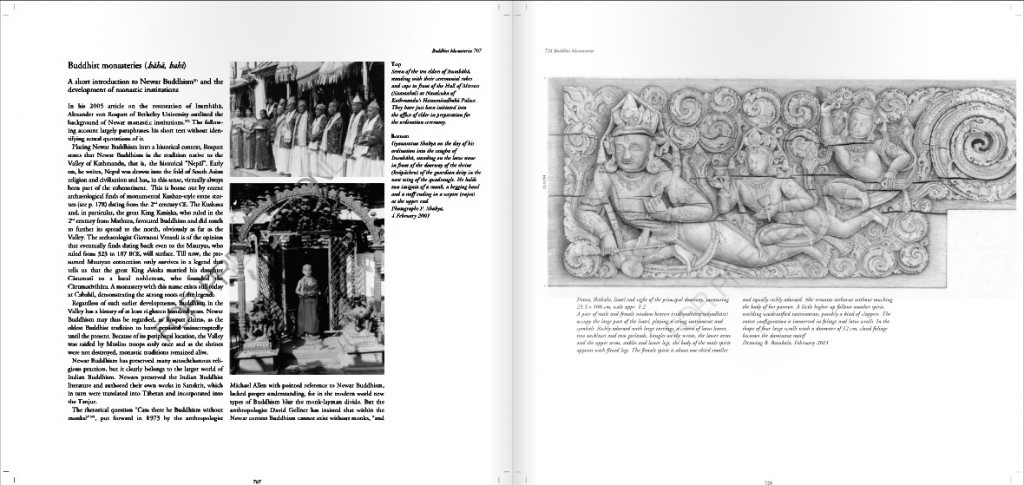Niels Gutschow. Architecture of the Newars: A History of Building Typologies and Details in Nepal. 3 volumes. Serindia, November 2011. 1030 pp. USD$450 (excluding postage). ISBN 978-1-932476-54-5 [official site]
From the Abstract
Architecture of the Newars by Niels Gutschow presents the entire history of architecture in the Valley of Kathmandu and its neighbours over a period of 1,500 years — right up to the present. It is a rare tribute to an urban culture which has preserved fascinating lifestyles to this very day. Gutschow first travelled to Nepal in 1962, returning in 1970 after reading architecture, and has constantly worked since then on the connections between ritual and the city. Since 1980 he has worked with measured drawings to identify the various building typologies, which are documented in three volumes with 862 photos and 939 drawings.

The first volume presents the complexity of the sacred landscape of the Valley and the urban context as well as the early periods, Buddhist votive structures (caityas), architectural fragments and temples from the early periods (5th–14th century). The second volume presents the Malla period (1350–1769) with a host of drawings documenting caityas, maths, tiered temples, shrines and monasteries. The third volume presents the modern period with temples and palaces of the Shaha kings and the Ranas; a variety of new caitya types; domestic architecture of the early 20th century; modern architecture and urban planning. The final chapter presents selected architectural details populated by airborne spirits in a transcultural perspective.
[preview]
Update: Book signing by the author at Vajra Books, Kathmandu, 2pm 14 December 2011.

